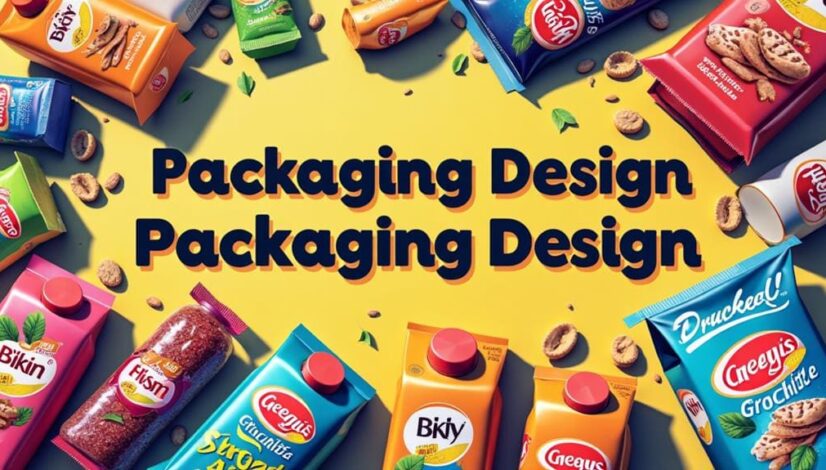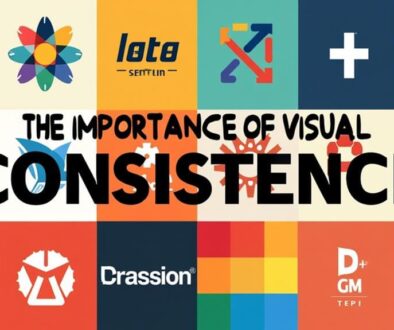The Role of Packaging Design in Building a Strong Brand
Packaging design plays a pivotal role in building a strong brand by influencing consumer perceptions and decisions. Its visual appeal captures attention, leveraging color psychology and tactile experiences to evoke emotional responses. Additionally, packaging communicates brand values, showcasing commitments to sustainability or luxury that resonate with target audiences. By enhancing user experience through functional design, brands foster loyalty and repeat interactions. In a crowded market, distinctive packaging differentiates products and creates memorable connections. Ultimately, a strategic approach to packaging not only enhances brand identity but also secures a competitive advantage, revealing insights into the future of branding success.
Key Takeaways
- Engaging packaging design captures consumer attention, influencing their purchase decisions and creating memorable first impressions.
- Thoughtful design communicates brand values and identity, fostering emotional connections and reinforcing trust among consumers.
- Unique and visually appealing packaging differentiates products in crowded markets, enhancing visibility and recognition.
- Sustainability-focused packaging resonates with environmentally conscious consumers, boosting brand loyalty through shared values.
- Effective usability features in packaging enhance the overall consumer experience, encouraging repeat interactions and loyalty.
Importance of Visual Appeal
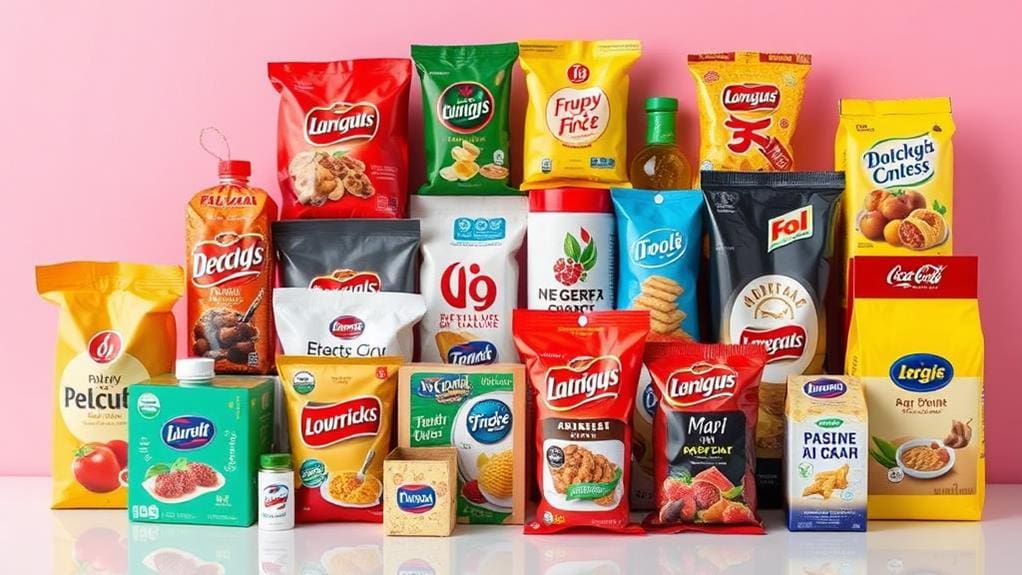
Visual appeal serves as a pivotal element in the domain of packaging design, functioning as the first point of interaction between the consumer and the product. This initial engagement is essential; consumers often make split-second decisions based on visual cues.
The strategic use of color psychology plays a significant role in this process, as colors evoke specific emotions and associations. For instance, warm colors like red and yellow can stimulate excitement and appetite, while cool colors like blue and green typically convey trust and tranquility. Understanding these psychological triggers allows brands to tailor their packaging to resonate with their target audience effectively.
Moreover, the choice of packaging materials further enhances visual appeal while also communicating the brand's values and sustainability efforts. High-quality materials can signify luxury and exclusivity, whereas eco-friendly options can attract environmentally conscious consumers.
The tactile experience of a product's packaging is equally essential; materials such as soft-touch coatings or embossed finishes not only enhance visual aesthetics but also engage the consumer's sense of touch, creating a multi-sensory experience that can foster brand loyalty.
Communicating Brand Values
Packaging design frequently serves as a powerful medium for communicating a brand's core values and mission. It transcends mere functionality, becoming an integral component of brand storytelling that encapsulates the essence of what a brand stands for.
Through thoughtful design choices—color palettes, typography, materials—brands can evoke emotional responses that resonate with their target audience, reinforcing their identity and values.
The concept of packaging symbolism plays a pivotal role in this communication process. For instance, eco-friendly packaging not only signals a commitment to sustainability but also aligns with the values of consumers who prioritize environmental responsibility.
Conversely, premium materials may signify luxury and exclusivity, appealing to a demographic that seeks sophistication in their purchasing decisions. Such choices are not arbitrary; they are meticulously crafted to narrate a story that deepens the consumer's connection to the brand.
Moreover, effective packaging design can invoke brand loyalty by fostering trust and transparency. When consumers perceive that a brand reflects their personal values and ethical considerations, they are more likely to engage with it on a deeper level.
This alignment is essential in today's market, where authenticity is prized above all else.
Enhancing Consumer Experience
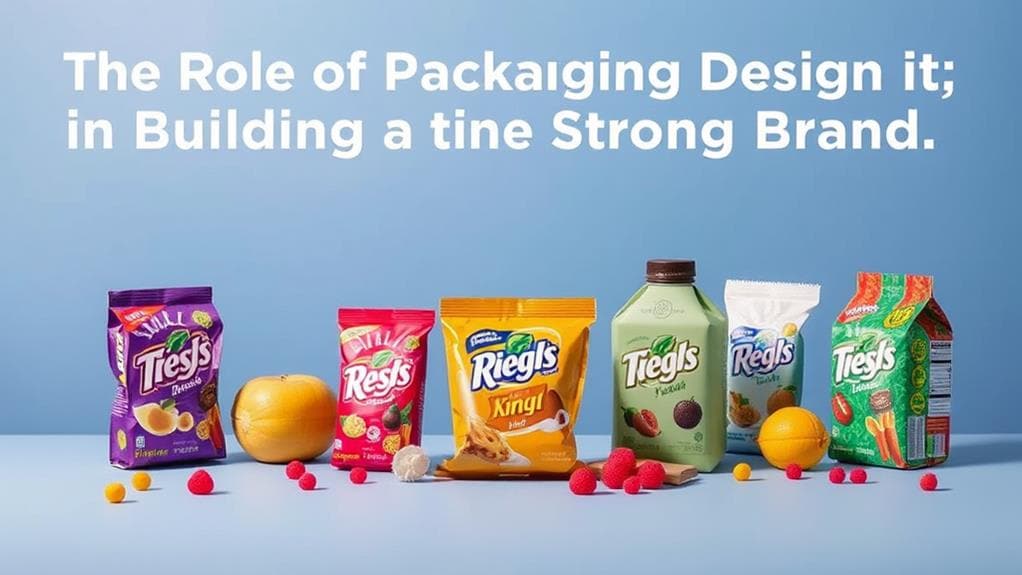
Creating an engaging consumer experience goes beyond the aesthetic appeal of a product's exterior; it encompasses the entire interaction a customer has with a brand from the moment of discovery to the point of purchase and beyond.
In today's competitive landscape, effective packaging design plays a pivotal role in shaping user experience and fostering emotional connections with consumers.
The integration of sensory engagement within packaging is fundamental to enhancing consumer experiences. Packaging that stimulates the senses—be it through tactile materials, vivid colors, or innovative shapes—can create memorable first impressions and evoke positive emotions.
For instance, the texture of a package can invite touch, while unique sounds, such as crinkling or popping, can enhance the anticipation of unboxing, thereby deepening the consumer's engagement with the product.
Moreover, thoughtful packaging guarantees that usability is prioritized. Easy-open designs, clear labeling, and sustainable materials contribute to a seamless user experience that not only satisfies consumer needs but also reinforces brand values.
When consumers feel that a brand is attentive to their experience, their loyalty is likely to deepen.
Ultimately, enhancing consumer experience through packaging design is a strategic investment that transcends mere functionality.
It is about crafting an immersive journey that resonates with consumers on multiple levels, nurturing their relationship with the brand and encouraging repeat interactions.
In a market where choices abound, a well-designed package becomes not just a vessel for the product, but a powerful ambassador of the brand's promise.
Differentiation in a Crowded Market
In a landscape saturated with products vying for consumer attention, effective differentiation becomes essential for brands aiming to stand out. Packaging design serves as a pivotal element in this quest, acting not merely as a protective layer but as a visual narrative that communicates brand identity and values. During a time when consumers are bombarded with choices, the design of packaging can create a compelling competitive advantage by establishing a distinct market perception.
To achieve differentiation, brands must leverage innovative packaging strategies that resonate with their target audience. This involves not only aesthetic considerations but also functionality and storytelling. Unique shapes, colors, and materials can evoke emotions and foster connections, transforming a mundane product into a memorable experience. For instance, a brand that utilizes eco-friendly materials can position itself as a leader in sustainability, appealing to a growing demographic of environmentally-conscious consumers.
Moreover, effective packaging design can enhance product visibility on crowded shelves, influencing purchase decisions at the point of sale. By strategically aligning design elements with consumer preferences and market trends, brands can cultivate a robust identity that transcends mere recognition, fostering loyalty and repeat purchases.
Ultimately, the role of packaging in differentiation is multifaceted, encompassing visual appeal, emotional resonance, and functional effectiveness. Brands that master these elements not only elevate their market perception but also secure a lasting competitive advantage in an increasingly crowded marketplace.
The ability to stand out through thoughtful packaging design is not just an option; it is a necessity for brands seeking longevity and relevance in their respective industries.
Sustainability and Brand Loyalty
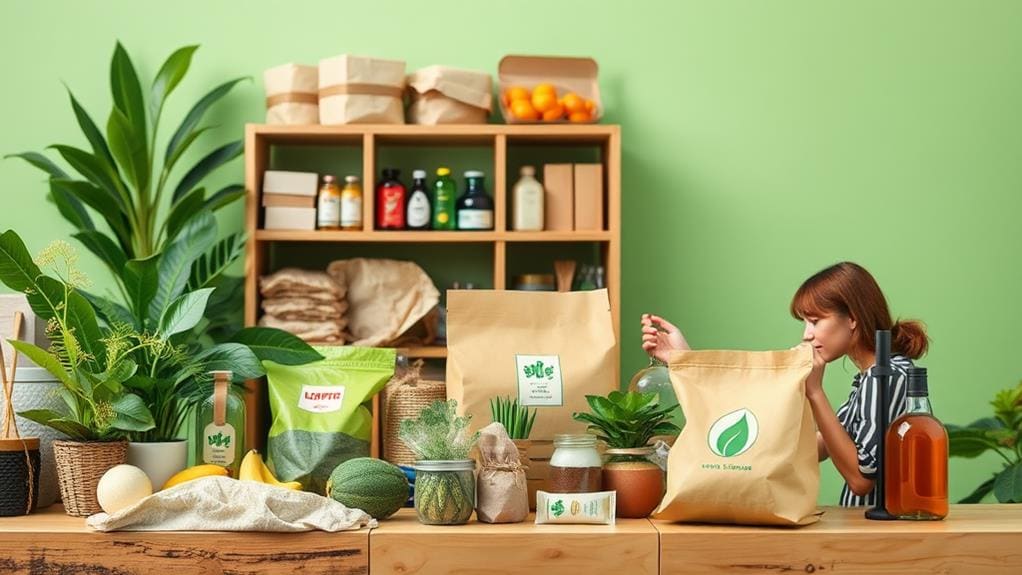
The increasing emphasis on sustainability has reshaped consumer expectations and brand loyalty in today's marketplace. As consumers become more environmentally conscious, the demand for eco-friendly materials in packaging design has surged. This shift compels brands to evaluate their packaging strategies critically, aligning them with sustainable practices that resonate with their target demographic.
Brands that incorporate eco-friendly materials not only reduce their environmental footprint but also fortify their relationship with consumers who prioritize sustainability. This alignment between brand values and consumer expectations fosters an emotional connection, enhancing brand loyalty.
Companies that transparently communicate their sustainability efforts through effective consumer education are better positioned to cultivate trust and loyalty. By informing consumers about the benefits of eco-friendly materials and sustainable practices, brands can transform their packaging into a powerful narrative that reflects their commitment to the environment.
Furthermore, sustainability in packaging serves as a competitive differentiator. In a market saturated with choices, consumers are increasingly inclined to support brands that demonstrate social responsibility. This phenomenon is particularly pronounced among younger generations, who are likely to advocate for brands that prioritize sustainability.
Thus, integrating sustainable packaging design not only meets the growing consumer demand for eco-friendly solutions but also serves as a strategic investment in brand loyalty. As companies navigate the complexities of modern consumer behavior, recognizing and adapting to the pivotal role of sustainability in packaging design is essential for long-term success.
Brands that embrace this paradigm shift will find themselves at the forefront of a new era of consumer engagement and loyalty.
Frequently Asked Questions
How Does Packaging Design Impact Consumer Purchasing Decisions?
Packaging design markedly influences consumer purchasing decisions by serving as a critical element of visual communication.
Effective packaging not only attracts attention but also conveys a brand's commitment to sustainability, which increasingly resonates with environmentally conscious consumers.
When designed thoughtfully, packaging can enhance product appeal, differentiate offerings in a saturated market, and foster brand loyalty.
Therefore, it is essential for brands to prioritize innovative and sustainable packaging solutions to effectively engage and persuade their target audience.
What Are the Latest Trends in Packaging Design?
Recent studies reveal that 72% of consumers prefer sustainable materials in packaging, reflecting a significant shift towards eco-friendly innovations.
Current trends emphasize minimalistic designs that convey clarity and sophistication, while interactive packaging engages consumers, enhancing the overall experience.
Additionally, brands are increasingly adopting personalized experiences to foster deeper connections.
Premium aesthetics remain essential, as they not only attract attention but also convey quality, reinforcing the brand's image in a competitive marketplace.
Can Packaging Design Influence Brand Perception Over Time?
Packaging design greatly influences brand perception over time through its evolution in aesthetics and functionality.
As consumer preferences shift, innovative packaging can enhance user experience, thereby fostering consumer loyalty.
Brands that adapt their packaging to reflect sustainability or technological advancements resonate more profoundly with their target audience.
This ongoing transformation not only reinforces brand identity but also cultivates a lasting emotional connection, ultimately shaping consumers' long-term perceptions and preferences in a competitive marketplace.
How Do Cultural Factors Affect Packaging Design Choices?
In an age reminiscent of the Renaissance, when art and commerce intertwined, cultural factors markedly influence packaging design choices.
Cultural symbolism shapes design aesthetics, resonating with regional preferences that reflect local heritage. This interplay impacts consumer behavior, as packaging must appeal to the values and traditions of its target audience.
Consequently, a nuanced understanding of these factors is essential for brands seeking to create packaging that not only attracts but also resonates deeply with consumers.
What Role Does Color Theory Play in Packaging Design?
Color theory is pivotal in packaging design, as it leverages color psychology to elicit emotional resonance among consumers.
Each hue evokes specific feelings and associations, which can greatly influence purchasing decisions. For instance, warm colors often convey excitement and energy, while cool tones suggest calmness and trust.
Conclusion
To summarize, effective packaging design serves as a pivotal element in brand development, influencing consumer perception and loyalty. The hypothesis that visual aesthetics directly correlate with brand success is substantiated by evidence indicating that well-designed packaging enhances product differentiation and communicates brand values. Additionally, the integration of sustainable practices within packaging not only fosters consumer trust but also aligns with contemporary consumer expectations. Ultimately, the strategic importance of packaging design cannot be overstated in the competitive marketplace.
